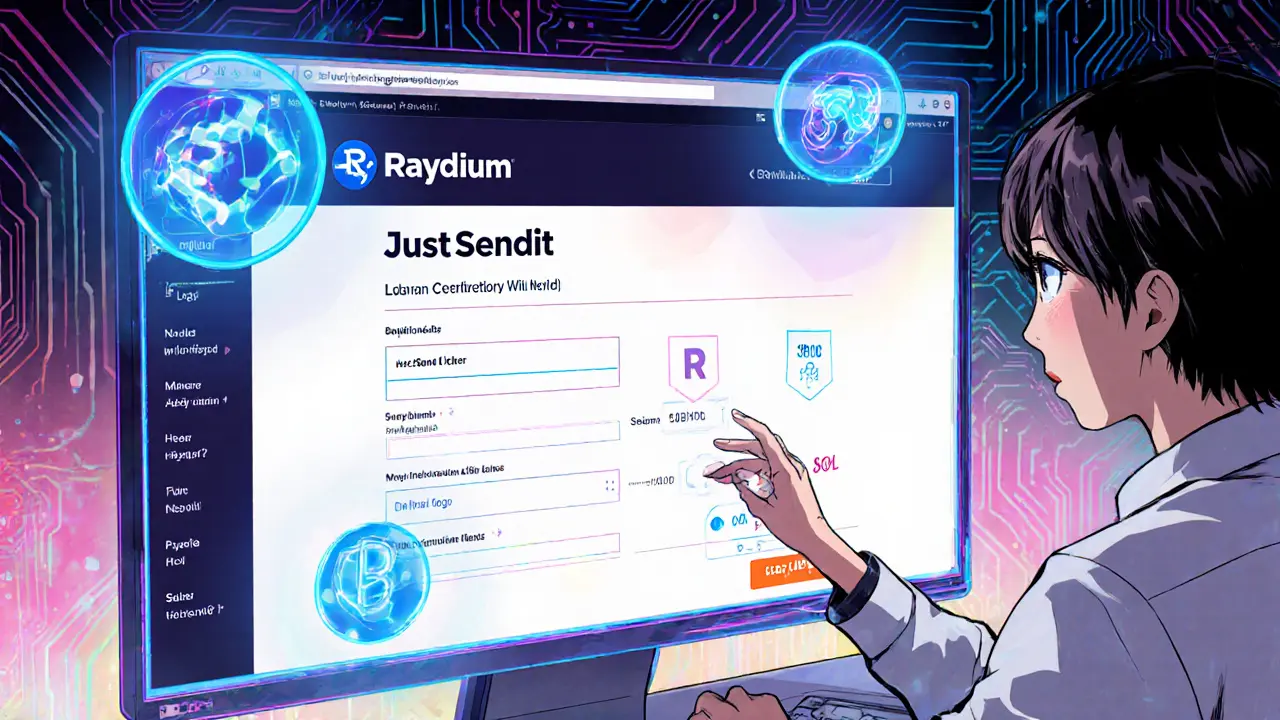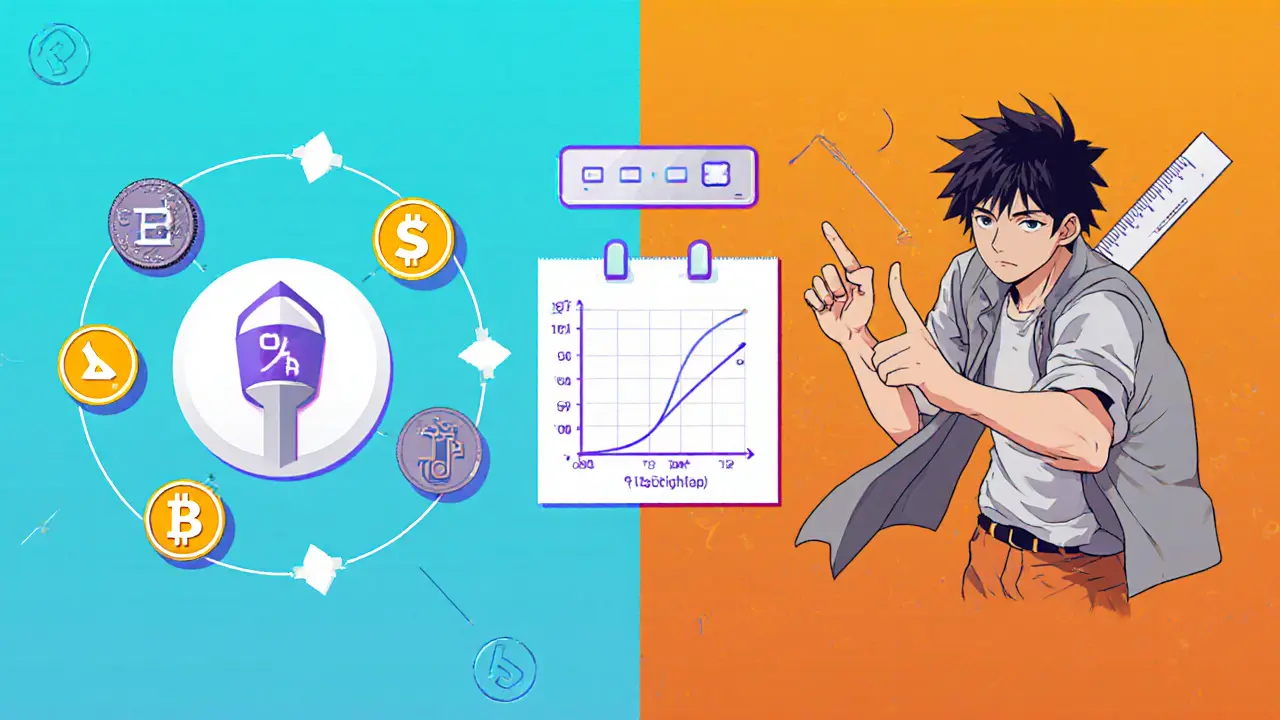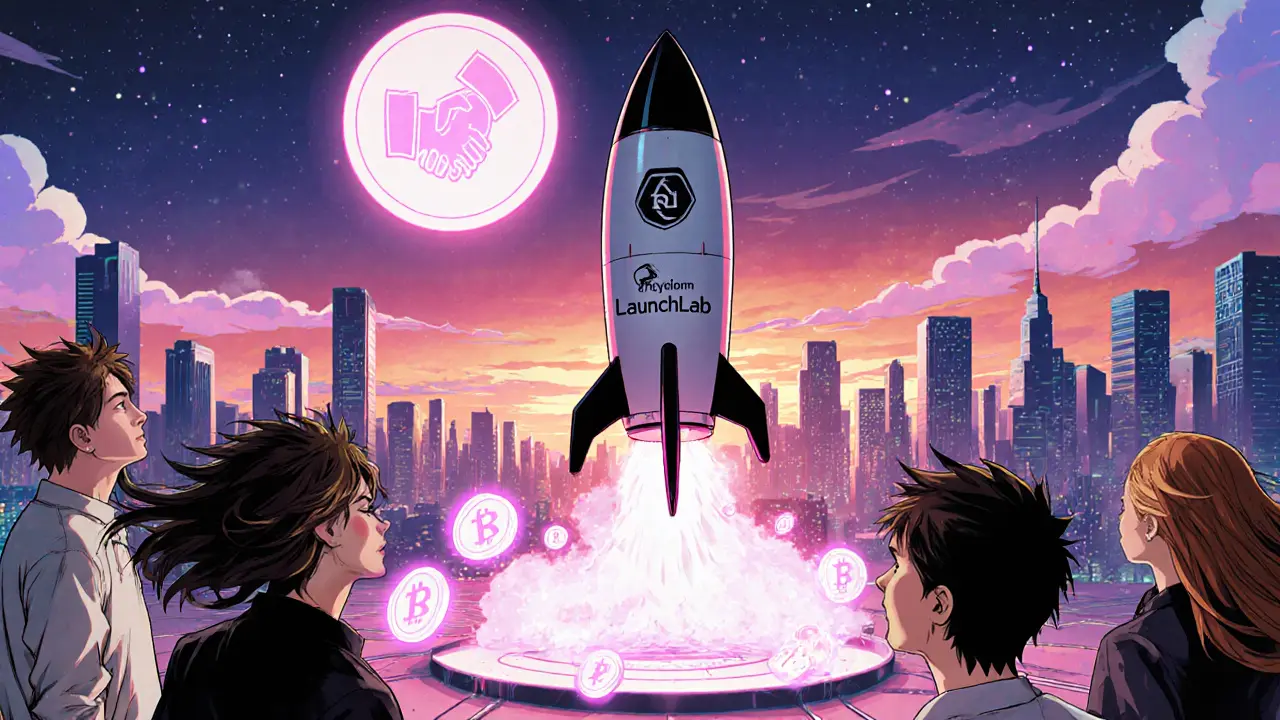Raydium LaunchLab Review: Solana’s New Token Launchpad Compared to Pump.fun

LaunchLab Earnings Calculator
Earnings Estimator
Calculate your potential earnings from a LaunchLab token launch based on your fundraising goals and trading activity.
Earnings Breakdown
With the meme token boom on Solana heating up, Raydium rolled out LaunchLab in April 2025 to snag a slice of the launchpad pie. This Raydium LaunchLab review breaks down how the platform works, what makes it different from Pump.fun, and whether it lives up to the hype.
What is Raydium LaunchLab?
Raydium LaunchLab is a no‑code token launchpad built on the Solana blockchain that lets creators mint memecoins and micro‑caps for free. It integrates directly with Raydium DEX, Solana’s leading decentralized exchange, and automatically migrates successful launches into permanent automated market maker (AMM) pools.
How LaunchLab Works - Two Modes, One Goal
The platform offers two operational modes:
- JustSendit - a click‑and‑go experience. Users fill in name, ticker, and an optional image, then hit launch. The system applies default bonding‑curve settings and a minimum raise of 30 SOL.
- LaunchLab Mode - granular control over tokenomics. Creators set custom raise targets (30‑200 SOL), choose linear, exponential, or logarithmic bonding curves, and add vesting cliffs if needed.
Both modes share a graduation requirement: once a token raises at least 85 SOL, its liquidity automatically jumps to a full Raydium AMM pool and the LP tokens are burned, securing the pool for the long term.
Fee Structure and Revenue Sharing
LaunchLab charges a flat 1 % base fee on every launch. The fee is split as follows:
- 50 % to the Community Pool
- 25 % used for buying back the RAY token
- 25 % earmarked for infrastructure and operational costs
Creators also earn 10 % of the trading fees generated by their pool via Raydium’s Burn & Earn system, and a 0.1 % referral fee is paid out in SOL for each referred trade.

Feature Set Compared to Pump.fun
| Feature | Raydium LaunchLab | Pump.fun |
|---|---|---|
| Quote token support | Multiple (SOL, USDC, USDT, others) | SOL‑only |
| Bonding‑curve models | Linear, exponential, logarithmic | Linear only |
| Liquidity migration | Automatic to Raydium AMM after 85 SOL | Manual migration required |
| Integration with DEX order book | Direct link to Serum order book for price discovery | No Serum integration |
| Launch volume (as of Oct 2025) | ~900,000 launches, ~1 % graduate | ~350,000 launches, ~2 % graduate |
| Fee | 1 % flat, split 50/25/25 | ~1.5 % variable |
The table shows LaunchLab’s technical edge: multiple quote tokens, richer bonding‑curve options, and a hands‑off liquidity migration that Pump.fun lacks.
Performance Numbers and Market Impact
Since its debut, LaunchLab has processed over 900 000 token launches. However, only about 1 % have cleared the 85 SOL threshold to become permanent AMM pools. That low graduation rate reflects the speculative nature of meme tokens - most projects never attract enough capital.
Raydium’s overall DEX volume sits around 600 million SOL daily, while Pump.fun’s sister platform PumpSwap reported 400 million SOL. The shift of traffic back to Raydium after LaunchLab’s launch helped blunt the dip caused by Pump.fun’s migration.
User Experience - From Creation to Trading
The UI is split into two tabs reflecting the modes. In JustSendit, the wizard asks for:
- Token name and ticker
- Upload a 128 × 128 pixel logo
- Add social links (Twitter, Discord)
- Confirm wallet ownership (Phantom, Sollet, etc.)
LaunchLab Mode adds steps for custom raise targets, bonding‑curve percentages, and optional vesting settings. Once submitted, the platform emits a transaction that creates the token and opens an initial liquidity pool with the chosen quote token.
Community feedback praises the speed (Solana’s >65,000 TPS) and near‑zero transaction fees, but critics note the steep learning curve for the advanced mode - especially when configuring exponential curves and vesting cliffs.

Pros and Cons
| Pros | Cons |
|---|---|
| Free token creation | Only 1 % graduation rate |
| Automatic migration to a secure AMM | Advanced mode requires solid tokenomics knowledge |
| Multiple quote tokens expand trading pairs | Referral rewards are modest (0.1 % in SOL) |
| Revenue sharing with community pool and RAY buybacks | High competition from other Solana launchpads |
Future Roadmap and Outlook
Raydium’s roadmap lists several upcoming upgrades: multi‑chain support, deeper analytics for creators, and an SDK that lets third‑party front‑ends plug into LaunchLab’s backend (already used by cook.meme). If graduation rates improve - perhaps through better token vetting or incentive programs - LaunchLab could become the de‑facto launchpad for Solana meme projects.
Analyst Arif Kazi notes that the platform’s biggest upside lies in its integration with Raydium’s existing liquidity infrastructure. As long as Raydium maintains its position as Solana’s top DEX, LaunchLab will inherit a ready pool of traders and market makers.
Bottom Line - Is Raydium LaunchLab Worth Your Time?
If you’re a meme‑token creator looking for a zero‑cost entry point and you trust Raydium’s AMM, LaunchLab offers the most streamlined path on Solana. For seasoned developers who need fine‑grained control over pricing, the LaunchLab Mode provides the flexibility that Pump.fun can’t match. The main drawback remains the low graduation ratio - you’ll need a solid community to push past the 85 SOL barrier.
What is the graduation threshold on LaunchLab?
A token must raise at least 85 SOL for its liquidity to auto‑migrate into a permanent Raydium AMM pool.
Can I launch a token without paying any fees?
Token creation is free, but a 1 % fee is taken from the amount raised once the launch completes.
Does LaunchLab support quote tokens other than SOL?
Yes - you can choose SOL, USDC, USDT, or other supported SPL tokens as the quote currency.
How are creator fees distributed?
Creators receive 10 % of the trading fees generated by their pool via the Burn & Earn mechanism.
Is there a referral program?
Yes - you earn 0.1 % of each referred trade in SOL.
Marina Campenni
August 22, 2025 AT 17:33Praise to the Raydium team for introducing a no‑code launchpad; the free token creation lowers the entry barrier for new creators. The automatic migration to a permanent AMM after reaching 85 SOL is a smart safeguard for liquidity. I also appreciate the 1 % fee being split among the community pool, RAY buybacks, and operational costs – it feels fairly transparent. The multiple quote token support, especially USDC and USDT, gives traders more options compared to SOL‑only rivals. Overall, the platform seems to balance accessibility with a solid infrastructure.
Irish Mae Lariosa
September 8, 2025 AT 06:23Raydium LaunchLab pretends to democratize meme‑token launches, yet its graduation rate of just one percent is a glaring inefficiency. The mandatory 30 SOL minimum raise is a steep hurdle for genuinely grassroots projects that lack deep pockets. Furthermore, the reliance on a flat 1 % fee, even if divided, still siphons capital away from creators who are already fighting thin margins. While multiple bonding‑curve models sound impressive, the exponential and logarithmic options are bewilderingly complex for most users. The UI, split between ‘JustSendit’ and ‘LaunchLab Mode,’ forces newcomers to navigate a labyrinth of settings before they can even list a token. Pump.fun may only offer linear curves, but at least its manual liquidity migration is straightforward and does not hide behind opaque automation. The community‑pool distribution, although noble in intent, offers no guarantee that funds will be used to support failed projects. In practice, the platform’s high competition and low graduation ratio mean that the majority of launches will burn out before ever seeing real market depth. Potential investors should be wary of the inflated hype surrounding Raydium’s integration with Serum, as order‑book depth does not automatically translate to sustainable trading volume. In short, unless Raydium introduces stricter vetting or meaningful incentives, LaunchLab will remain a gimmick for the token‑creation curious rather than a serious launchpad.
Nick O'Connor
September 24, 2025 AT 19:13Honestly, the platform, despite all the fanfare, provides a surprisingly straightforward token creation process, which, in my view, is commendable.
Miguel Terán
October 11, 2025 AT 08:03Raydium LaunchLab feels like the wild west rode into the Solana universe with a shiny badge of zero‑cost token creation. The sheer speed of Solana’s network lets a meme token be born in seconds and then flung onto an order book that already knows how to match trades. The JustSendit wizard is almost playful; it asks for a name, a ticker and a tiny logo and then poof the token exists. The automatic migration after 85 SOL is like a secret door that opens to a permanent pool without the creator having to lift a finger. The multiple quote tokens – SOL, USDC, USDT and more – give traders the freedom to pick the pair that best fits their strategy. The bonding‑curve options feel like a painter’s palette; you can choose linear for simplicity, exponential for aggressive price ramps or logarithmic for a smoother climb. The fee structure, a flat 1 % split three ways, sounds fair on paper and it even feeds back into the community pool and RAY buybacks. The 10 % creator share of trading fees is a nice carrot that can keep a project alive long after the launch hype fades. The downside, however, is the brutal graduation rate; only about one percent of projects ever cross the liquidity threshold. The market is saturated with meme tokens and most of them never find a community big enough to push past the 85 SOL wall. The competition from other launchpads like Pump.fun is fierce, but Raydium’s integration with Serum’s order book gives it an edge in price discovery. The roadmap promises multi‑chain support which could open the floodgates to even more creators. The upcoming SDK will let third‑party front‑ends plug in and expand the ecosystem. The analytics upgrades could finally give creators the data they need to tweak tokenomics on the fly. The community feedback praising near‑zero fees is outweighed by the steep learning curve of advanced mode. The platform sits at a crossroads – either it evolves into a robust launch ecosystem or it remains a novelty for the fast‑paced meme crowd.